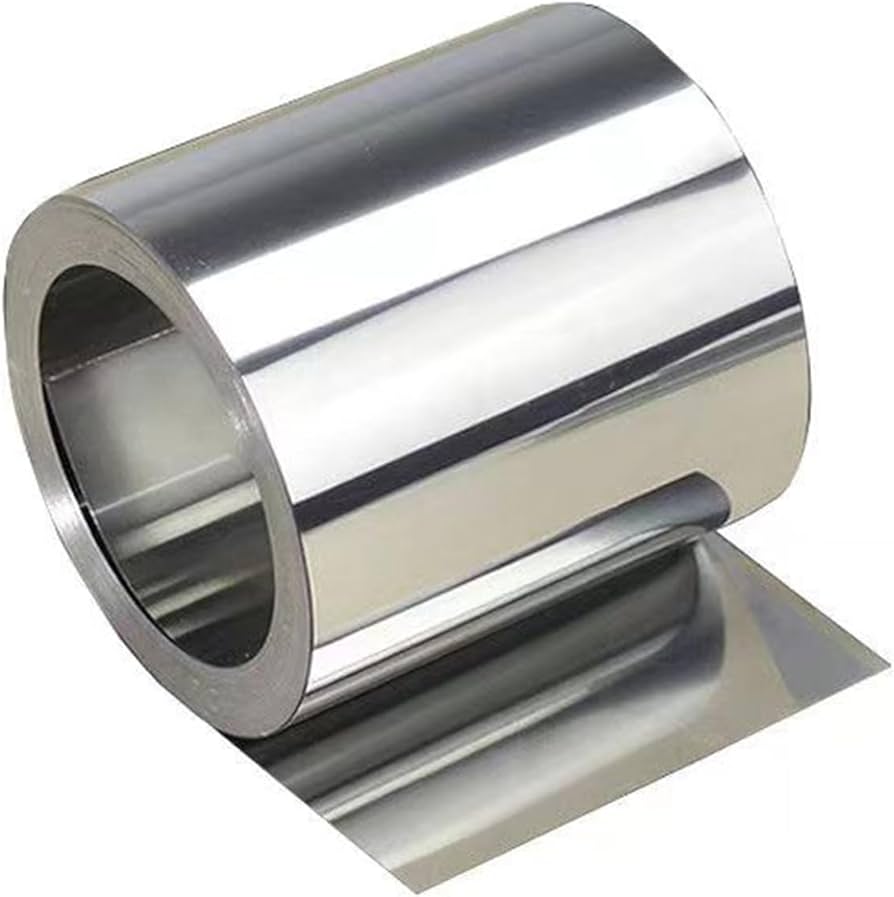Welding stainless steel sheets can be a complex process, but with the right techniques and an understanding of the material, it becomes significantly more manageable. Stainless steel sheets are popular across various industries due to their durability, corrosion resistance, and aesthetic appeal. For beginners, learning how to weld stainless steel sheets effectively is essential for ensuring strong, clean welds and maintaining the properties of the material. This guide provides practical insights into the welding process, from preparation to choosing the right techniques, with advice from stainless steel sheets suppliers and experts in the industry.
1. Understanding Stainless Steel Sheets: Material Properties
Stainless steel sheets are known for their resistance to rust and corrosion, which is due to their chromium content. Typically, stainless steel sheets contain at least 10.5% chromium, which forms a protective oxide layer on the surface. This protective layer helps the sheets withstand various environmental conditions. According to stainless steel sheets suppliers, this material is particularly popular in industries such as construction, automotive, and manufacturing due to its durability and low maintenance requirements.
When welding stainless steel sheets, it’s important to understand that they differ from other metals in terms of thermal conductivity and expansion. Stainless steel has lower thermal conductivity but higher thermal expansion than carbon steel, which can lead to warping or distortion during welding. This makes it crucial to handle the material carefully and use specific techniques tailored for stainless steel.
2. Preparing Stainless Steel Sheets for Welding
Proper preparation of stainless steel sheets is the first step in ensuring successful welds. Stainless steel sheets suppliers often emphasize the importance of cleaning and prepping the surface to remove any contaminants. Here’s how you can prepare stainless steel sheets for welding:
Surface Cleaning: Remove any oils, dirt, or other contaminants from the surface of the sheets. These contaminants can cause defects in the weld, such as porosity, which weakens the final joint. Clean the sheets with a solvent or acetone and wipe them dry before welding.
Edge Preparation: For thicker stainless steel sheets, beveling the edges can help achieve a stronger, more uniform weld. Beveling can be done using a grinder or file. Proper edge preparation also helps control heat input, reducing the chances of warping.
Clamping: Clamping the sheets securely helps prevent movement during welding, minimizing the risk of distortion. Stainless steel sheets suppliers recommend using heat-resistant clamps to hold the sheets in place, particularly when working with thin sheets.
3. Choosing the Right Welding Technique for Stainless Steel Sheets
Selecting the appropriate welding technique is essential for achieving quality results with stainless steel sheets. Each welding method offers unique advantages and challenges.
TIG (Tungsten Inert Gas) Welding: TIG welding is one of the most commonly recommended techniques for stainless steel sheets. It offers excellent control and produces clean, high-quality welds with minimal spatter. Beginners might find it slightly challenging to learn, but with practice, it can produce the most aesthetically pleasing results.
MIG (Metal Inert Gas) Welding: MIG welding is another viable option for beginners welding stainless steel sheets. It is generally faster than TIG welding and produces good-quality welds. However, MIG welding tends to create more spatter and requires careful handling to avoid defects. It’s an ideal technique for thicker stainless steel sheets.
Stick Welding (Shielded Metal Arc Welding): Stick welding can be used for stainless steel sheets, but it is not the preferred method due to its tendency to create spatter and produce less aesthetically appealing welds. Beginners may find it easier to start with TIG or MIG welding before attempting stick welding on stainless steel.
4. Managing Heat and Controlling Warping
Heat control is critical when welding stainless steel sheets. Due to their high thermal expansion, stainless steel sheets are prone to warping if exposed to excessive heat. Tool steel suppliers and industry experts recommend the following practices to manage heat effectively:
Short Weld Passes: Perform shorter weld passes rather than long continuous ones. This technique helps distribute heat more evenly and reduces the chances of distortion. Allow the sheets to cool between passes to prevent excessive heat buildup.
Pulse Welding: Pulse welding involves alternating between high and low currents during the welding process. This method limits heat exposure, reducing the risk of warping in stainless steel sheets. Many modern welding machines come with a pulse setting, making it easier for beginners to implement.
Heat Sink: Using a heat sink, such as a copper bar, can help absorb excess heat during the welding process. Placing a heat sink near the weld area can effectively minimize heat transfer and maintain the shape of the stainless steel sheets.
5. Avoiding Common Welding Defects in Stainless Steel Sheets
Welding defects can compromise the strength and appearance of stainless steel sheets. To avoid these issues, stainless steel sheets suppliers advise beginners to watch out for the following:
Porosity: Porosity refers to small holes or voids in the weld bead, caused by trapped gases. It can weaken the weld and compromise its appearance. Proper surface cleaning, consistent shielding gas coverage, and the use of quality filler materials can help minimize porosity.
Cracking: Due to their low thermal conductivity, stainless steel sheets are susceptible to cracking, especially in the heat-affected zone. Reducing heat input and using proper filler materials can minimize the risk of cracking.
Distortion: Warping or distortion is common when welding stainless steel sheets, particularly thin sheets. Techniques like clamping, pulse welding, and pre-welding planning can help maintain the sheet’s shape.
6. Selecting Filler Material for Stainless Steel Sheets
Choosing the right filler material is critical to ensuring strong and durable welds on stainless steel sheets. The filler material should match or complement the composition of the stainless steel sheets. For example, if you’re welding 304 stainless steel sheets, using a 308L filler material is typically recommended. Stainless steel sheets suppliers often provide guidance on selecting compatible fillers for specific stainless steel grades to ensure compatibility and avoid issues such as cracking.
7. Post-Weld Cleaning and Finishing
Post-weld cleaning is essential to restoring the corrosion-resistant properties of stainless steel sheets. The heat generated during welding can cause a discoloration called heat tint, which forms on the surface near the weld bead. If left untreated, this discoloration can compromise the sheet’s corrosion resistance.
Pickling: Pickling involves applying a chemical solution to remove the oxidized layer from the surface. It’s an effective way to clean stainless steel sheets after welding and restore their original appearance.
Passivation: After welding and pickling, passivation can help enhance the corrosion resistance of stainless steel sheets. Passivation involves applying an acid solution, usually containing nitric acid, which strengthens the oxide layer on the surface.
Mechanical Polishing: For applications requiring an aesthetically pleasing finish, mechanical polishing can be used to restore the shine and smoothness of stainless steel sheets. Many stainless steel sheets suppliers offer polishing services to ensure a high-quality finish.
8. Safety Considerations for Welding Stainless Steel Sheets
Welding stainless steel sheets presents certain safety hazards, including UV radiation, heat exposure, and fumes. Here are some safety tips to follow:
Protective Gear: Always wear appropriate personal protective equipment (PPE), including gloves, a welding helmet with a proper shade, and flame-resistant clothing to protect against sparks and UV radiation.
Ventilation: Welding stainless steel sheets can produce fumes containing chromium and nickel, which can be harmful if inhaled. Ensure that the welding area is well-ventilated or use fume extraction systems to protect against exposure.
Fire Safety: Keep flammable materials away from the welding area and have a fire extinguisher nearby in case of emergencies.
9. Sourcing Quality Stainless Steel Sheets and Materials
The quality of stainless steel sheets directly impacts the success of your welding project. Working with reputable stainless steel sheets suppliers is essential to ensure you receive high-quality materials that meet industry standards. Reliable suppliers provide detailed specifications and can assist with selecting compatible filler materials and protective finishes. They also offer sheets with consistent thickness, which is crucial for achieving uniform welds.
Conclusion: Mastering Welding Techniques for Stainless Steel Sheets
Welding stainless steel sheets requires a good understanding of material properties, technique, and preparation. By following best practices and taking the time to select the right welding method, filler material, and preparation steps, even beginners can achieve strong, clean welds on stainless steel sheets. Partnering with reputable stainless steel sheets suppliers and staying mindful of safety measures will help ensure success in your welding projects, setting the foundation for durable, corrosion-resistant results. With experience and attention to detail, mastering the welding of stainless steel sheets becomes a valuable skill applicable across a wide range of applications.










